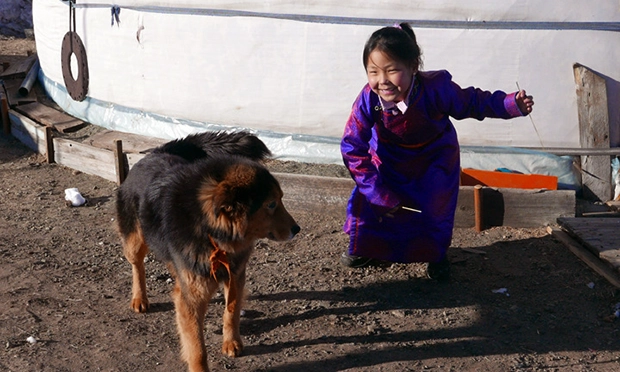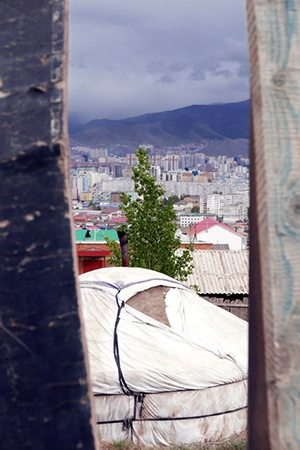‘Impossible not to be curious’: Photographer challenges stereotype of nomadic Mongolians with exhibition on yurt-dwelling commuters

‘Mongolians have to be tough’. Photograph: Cath Forrest
Residents have a couple of days to catch a stunning photography exhibition about life in Mongolia.
When Mongolia comes to town by Cath Forrest is on display at the Hackney Picturehouse and ends this Friday.
Photographer Forrest has split the collection into two parts.
The first contains her black and white photographs of the beautiful Mongolian countryside.
The second section of colour photographs focuses on the vast number of people who live in yurts – portable tents – but work in the city.
Forrest told the Citizen: “I wanted to do this for education because I don’t think many people have documented the Ger district in Ulaanbaatar.
“There are articles in the National Geographic but only in a general way. People mostly take photos of the amazing landscapes.”

Big City Life. Photograph: Cath Forrest
During her first trip to Mongolia, Forrest was struck by the huge ring of yurts around the city.
“Right in front of my eyes was this extraordinary site and it was impossible not to be curious about it.”
She decided to use her next trip to challenge the romantic notion of Mongolians as a nomadic, countryside-dwelling community.
Her photography communicates how these age-old ways of living have adapted to modern city-worker norms, for the businessperson, the teacher or doctor.
“No-one wanted me to explore the Ger district,” Forrest explains. “That’s why it’s interesting, because they’re kind of in denial about the districts and pretending it doesn’t exist.
“They think, ‘Oh tourists won’t go there’. But actually, the vast majority of the population lives there or in a yurt, but they all come into their professional jobs and pretend they don’t live there.”
Forrest describes how, while we might think of this kind of settlement style as a shanty town, for many people it’s an established and preferable way of living.
She said the main sources of information – NGOs that are based there and often have a charitable angle – skew our perception.
She said: “It’s like if you only covered an area of London via its soup kitchens. But it’s complicated because the people there are also climate refugees.”
Mongolians are periodically hit with extreme winters that wipe out their agriculture.
The effects of climate change have increased the rates of these weather events, called dzuds. This has led to hundreds of thousands of people taking their yurts to the city.
Despite the lifestyle being so established, the government does not provide services like electricity, sanitation and water. The community has a well, a rigged-up electricity supply, and makeshift toilets.
“The government doesn’t want to connect the Ger district up to all the systems because that would be recognising it,” Forrest said.
She was warned by the Mongolians that the district was too dangerous but she was drawn to it by the questions she had.
After failing to get to know people in the Ger district through NGOs, she managed to befriend people working in her hostel who invited her to visit. She found it wasn’t dangerous at all.
“However, there is a problem with traffic because there is no traffic control at all and no pavements,” she adds.
Despite the difficulties in getting access, she eventually spent time with a seamstress mother and hotel manager father, capturing life inside their home and outside in the district.
There is no map or addresses in the district, so Forrest found her way around by using tall landmarks.
Yurts are the warmest homes for winter, so people tend to spend summers in a building they have created next to their yurt, on land that each Mongolian is freely allotted.
Forrest said: “Mongolians have to be tough to live that way. They are part of a traditional family system and it’s very settled.
“And in the countryside, the word ‘nomad’ just means someone who moves their sheep from place to another. It’s not a free person wandering around at will.”
When Mongolia comes to town runs until 28 April at the Hackney Picturehouse, where Forrest is also selling a book about her time in Mongolia.
